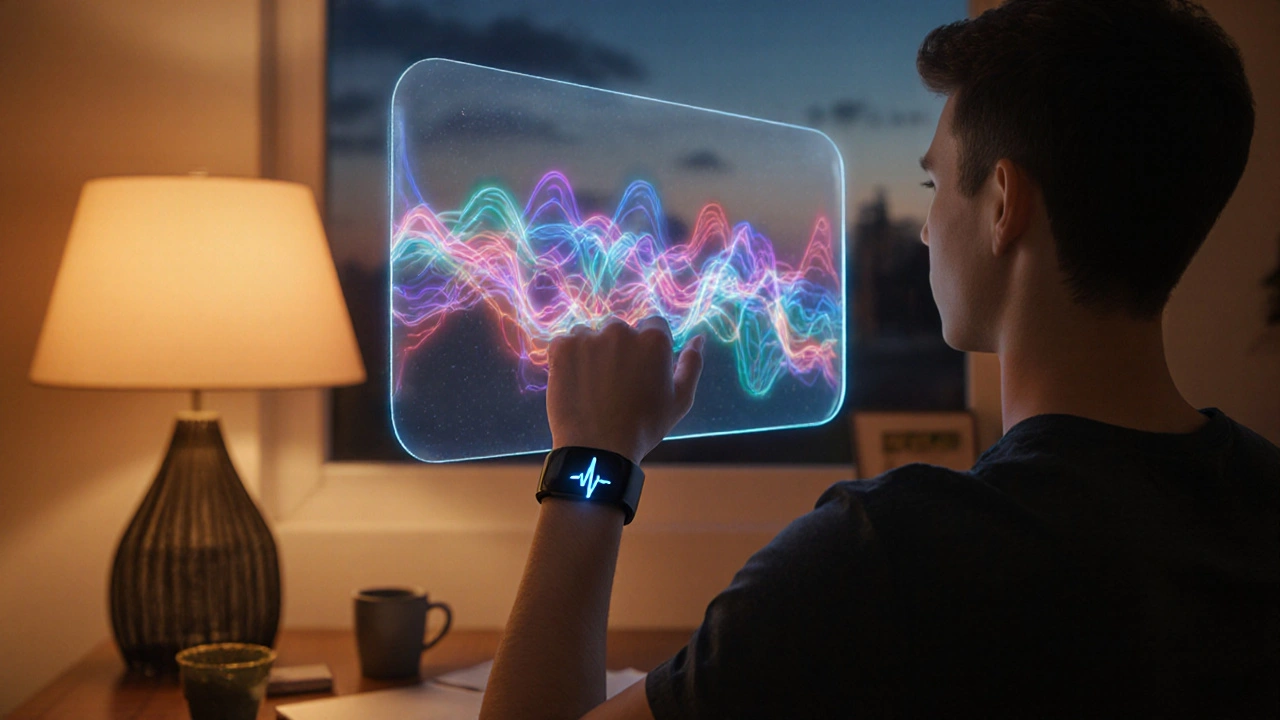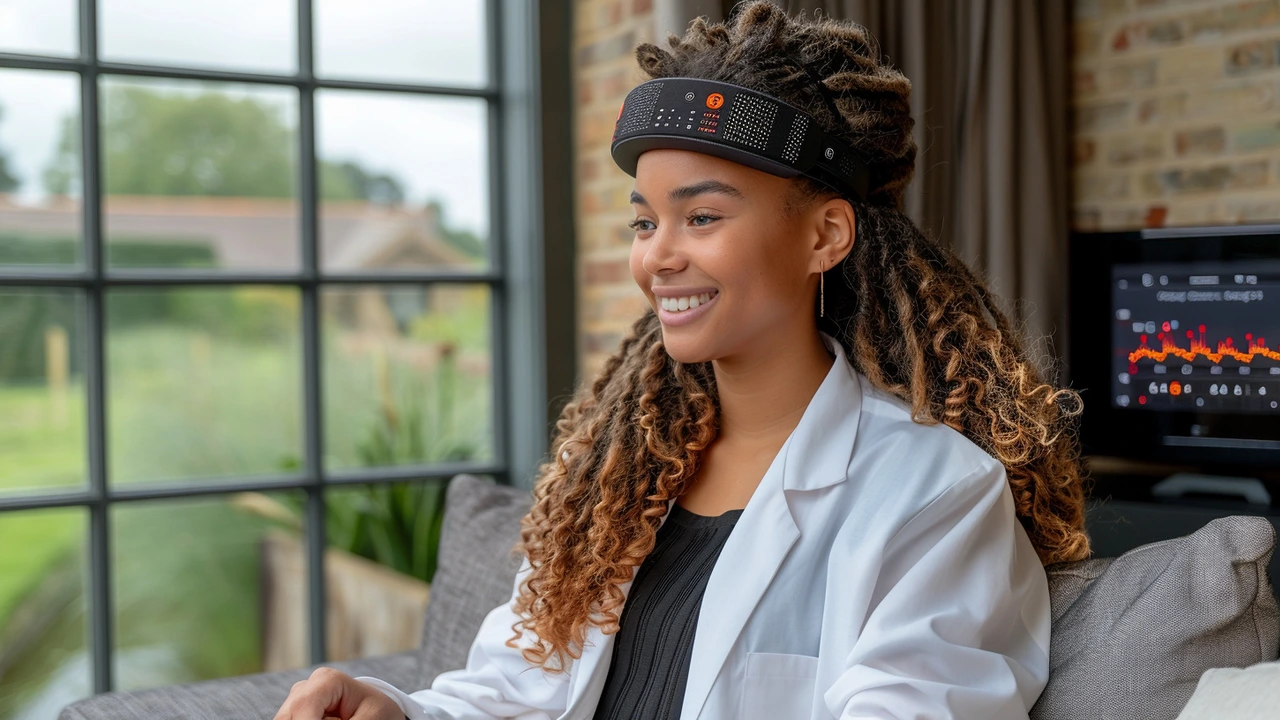Biofeedback: Train Your Body to Reduce Stress, Pain, and Improve Focus
Ever wish your body would calm down on command? Biofeedback gives you that power. It’s a set of simple tools and exercises that show you real-time signals from your body—like heart rate, muscle tension, or breathing—so you can learn to change them. People use it for anxiety, headaches, sleep, and even sports performance.
How biofeedback works
Biofeedback uses sensors to measure a signal (for example, heart rate variability or muscle tension) and shows it on a screen or speaker. When you see the signal, you try different breathing, posture, or mental techniques to move it in a healthier direction. If your heart rate steadies or your muscles relax, the device lets you know. That instant feedback speeds learning—your brain links the action to the result faster than guessing.
Common types you’ll see: HRV (heart rate variability) for stress and recovery, EMG (muscle sensors) for tension and pain, and EEG or neurofeedback for focus and sleep. Mobile apps and wearable devices now offer basic HRV and breathing training at home. Clinical settings use medical-grade equipment for more complex issues.
How to start and practical tips
Want to try biofeedback? First, decide your goal: stress, headaches, sleep, or better focus. For stress and sleep, a simple HRV or breathing app paired with a chest or finger sensor can help. For chronic pain or severe anxiety, see a licensed biofeedback therapist—look for a credential like BCIA or a clinician who lists biofeedback in their services.
During a session expect a short intake, sensor placement, and guided exercises. Sessions usually last 30–60 minutes. Be consistent: practice two to three times a week for several weeks to build skills. At home, keep sessions short—5–15 minutes—and focus on slow diaphragmatic breathing or gentle tension-release movements.
Real results? Clinical trials show biofeedback helps reduce migraine frequency, lowers anxiety symptoms, and improves some sleep problems. It’s low-risk because it’s non-invasive and drug-free. Still, don’t stop prescribed treatments without talking to your doctor.
Quick tips: 1) Pick one clear goal and track it (sleep hours, headache days, or stress scores). 2) Commit to short, regular practice. 3) Combine biofeedback with sleep, movement, and simple mindfulness for faster results. 4) If using apps, choose ones with good reviews and clear guidance.
If you want a straightforward tool to understand and control your body’s reactions, biofeedback is worth a try. It teaches a skill you keep using long after the device is off.

Biofeedback for Anxiety Relief: How It Works and Benefits
Learn how biofeedback works for anxiety relief, compare popular methods, and get a step‑by‑step plan to start calming your nervous system today.
Read More
Biofeedback Therapy: Natural Solutions for Stress, Pain & Peak Wellness
Explore how biofeedback, a non-invasive therapy, transforms health and wellness. Learn the real science, practical tips, and what to expect in therapy.
Read More
Biofeedback Techniques for Mindfulness: Master Self-Regulation Easily
Discover how biofeedback helps master mindfulness and self-regulation. Explore practical facts, tips, and tech for real-life stress management.
Read More
Biofeedback for Stress Reduction: How It Works and Why You Should Try It
Discover how biofeedback helps tackle stress using real-time body signals. Learn about the technology, how it guides relaxation, and what sessions feel like. Get real-world tips from people who use it, plus science-backed facts on its effectiveness. Feel more in control with practical steps for getting started. Start using your body’s hidden data to relax better today.
Read More
Innovative Biofeedback Solutions for Personal Health Improvement
Biofeedback technology has emerged as a transformative tool in personal health management, empowering individuals to understand and control their physiological functions. By providing real-time feedback on bodily processes, biofeedback assists in managing stress, anxiety, and chronic pain, while also enhancing mental focus. This article explores the different types of biofeedback devices and their applications, tips on getting started, and how they foster a comprehensive approach to health improvement.
Read More
Harnessing Biofeedback and Mindfulness for Mental Wellness
Explore the fascinating synergy between biofeedback and mindfulness in enhancing mental wellness. This article delves into how these two practices work together to alleviate stress, improve emotional regulation, and promote overall well-being. Discover techniques, interesting insights, and practical tips that empower you to integrate these approaches into your daily routine. Understand the science behind biofeedback and how mindfulness complements it. Become inspired to take charge of your mental health with these effective methods.
Read More
Harnessing the Power of Biofeedback Techniques for Enhanced Healthcare Outcomes
Biofeedback has emerged as a groundbreaking approach in healthcare, offering a window into the body's internal processes. This article delves into the science behind biofeedback, exploring its applications in managing stress, chronic pain, and other conditions. By utilizing sensors to monitor physiological signals, biofeedback empowers individuals to take control of their wellbeing. From stress reduction techniques to managing chronic conditions, biofeedback offers a non-invasive pathway to health and wellness. Discover the wonders of biofeedback and how it's revolutionizing healthcare.
Read More
Harnessing Biofeedback for Enhanced Mind-Body Health: Integrative Wellness Techniques
Explore the transformative nature of biofeedback as a tool for achieving mind-body wellness. This article dives into the fascinating realm of biofeedback, examining its principles, benefits, and practical applications for stress management and health improvement. Drawing on real-world examples and scientific insights, the article unveils how biofeedback empowers individuals to take control of their physiological responses and foster overall well-being.
Read More
How Biofeedback is Revolutionizing Mental Health Treatment
Hold onto your hats, folks, because biofeedback is shaking things up in the mental health world, and it's as exciting as a roller coaster ride! In the simplest terms, biofeedback is a technique that trains your brain to control your body's functions, like a maestro leading an orchestra. It's like giving your brain a gym membership, and let me tell you, it's definitely getting swole! This high-tech, non-invasive method is transforming mental health treatment by helping to reduce anxiety, manage stress, and improve overall well-being. So, if you're ready to take your brain for a joy ride, hop on the biofeedback train; destination: a healthier, happier you!
Read More